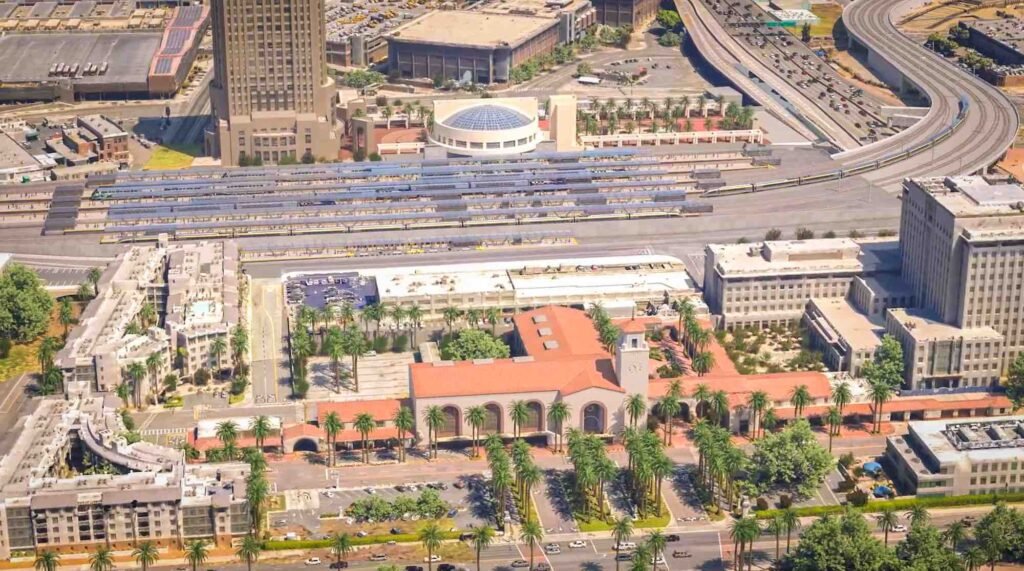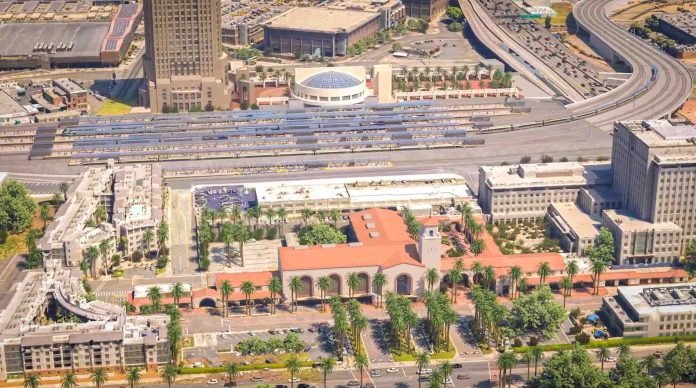The California High Speed Rail Authority—the State’s governmental arm overseeing its attempt to build a high speed train that will eventually connect nearly the entire state along the coast—has released a new animation that shows what the train will look like entering the proposed upgraded and expanded Union Station in Downtown Los Angeles.
So there are two projects to be discussed here: The state’s high speed rail program and “Link US,” the program overseeing the Union Station upgrades.
Last year, the Metro board greenlit an initial pre-construction phase for “Link US,” a highly-anticipated program that will upgrade Union Station to what is called “through tracks”—since its opening in 1939, the station uses stub-end tracks, meaning trains slowly approach in before having to reverse out—to create efficiencies for Metrolink and Amtrak, and to prepare for future high-speed rail.

According to Metro, building through-tracks will increase Union Station capacity from 180 to 278 trains daily and reduce train dwell times from twenty to 5 minutes—no small feat and at no small price tag: $2.3B, broken up into phases. The first phase—one of its most complex—includes a bridge over the 101 and new rail tracks, all having to built while still operating.
However, their bid for Phase A construction was canceled in August of 2022 and pushed to February of 2024 in the pursuit of federal funds for the project.
Meanwhile, the high speed rail project moves forward in California though not without its uphill battles: As Melanie Curry of Streetsblog points out, the amount the Feds have invested in high-speed rail nationally so far—$10B—is minuscule compared to federal investments in aviation ($777B) and highways ($2 trillion-with-a-T). And the California project only got $4 billion of those $10 billion total.

“Costs for the California High-Speed Rail Program have risen along with costs in general,” Curry wrote. “Delays and other setbacks have also contributed to those cost increases and given opponents of California’s high-speed rail program fuel for attack. The constant drumbeat from former LA Times writer Ralph Vartabedian, who still takes every opportunity to rip into the program’s troubles and has zero interest in offering solutions, has driven the public to hold a false impression that the program is failing.”
It needs to be emphasized, however, the project is not dead—but according to former U.S. Secretary of Transportation and Congressional representative Ray LaHood, federal impediment is the main cause for California’s rail project not moving forward more quickly or efficiently.


